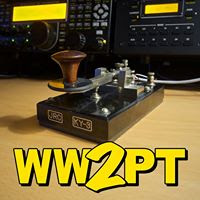Messiers in UMa, Io Crosses Jupiter
 Two clear, dark nights in a row, though tonight the Clear Sky Clock says it's a little less transparent. I dunno, looks about the same as last night to me. Temp 44°F, humidity 64%, winds calm - a cool breeze every now and then to remind me it's not summer just yet...
Two clear, dark nights in a row, though tonight the Clear Sky Clock says it's a little less transparent. I dunno, looks about the same as last night to me. Temp 44°F, humidity 64%, winds calm - a cool breeze every now and then to remind me it's not summer just yet...Again with the TV85 on Porta, but tonight all Vixen LVW eyepieces, starting with 22mm. Found M51 easily, right where I left it. I notice some blur at the edge of field of the 22mm. Swapped out with the 17mm LVW, still some edge blur but darker background helps bring out the fuzz around the two galactic cores.
Moved on to M81 & M82 before they dipped behind the house. I could clearly make out the different shapes between these two - M81 the soft oval of a not-quite face-on spiral, M82 almost rectangular. Swapped out the 17mm (35x) for the 13mm (45x); background darkened greatly again with the increased magnification, and virtually no edge-of-field distortion. The 13mm LVW is a keeper, for sure.

On to the bowl and the Messier pair M97 (Owl Nebula) and M108 (spiral galaxy almost edge on. Found the Owl first, then noted it's position on the chart near a triangle of stars which stand out at mags 6, 7 and 8. M97 makes a squat triangle with one pair, M108 a right triangle with the other. Back and forth betweem the 13mm and 17mm, definitely better views with the former.

Interestingly, while looking at M81 & M82, a satellite passed between the two. Shortly thereafter the same thing happened while viewing M97 & M108. Astronomical odds, I suppose.
 Jupiter in the 13mm showed good contrast during brief and far-between moments of settled seeing. I watched Io emerge from Jupiter's disc at around 12:43 (0443 UTC); I did not see Io or it's shadow on the disc in the hour or so prior. Very good detail with 8mm LVW (75x), even better with 13mm + 2.5x Powermate lens (115x) - probably the best views of Jupiter I've ever had with the TV85.
Jupiter in the 13mm showed good contrast during brief and far-between moments of settled seeing. I watched Io emerge from Jupiter's disc at around 12:43 (0443 UTC); I did not see Io or it's shadow on the disc in the hour or so prior. Very good detail with 8mm LVW (75x), even better with 13mm + 2.5x Powermate lens (115x) - probably the best views of Jupiter I've ever had with the TV85.














